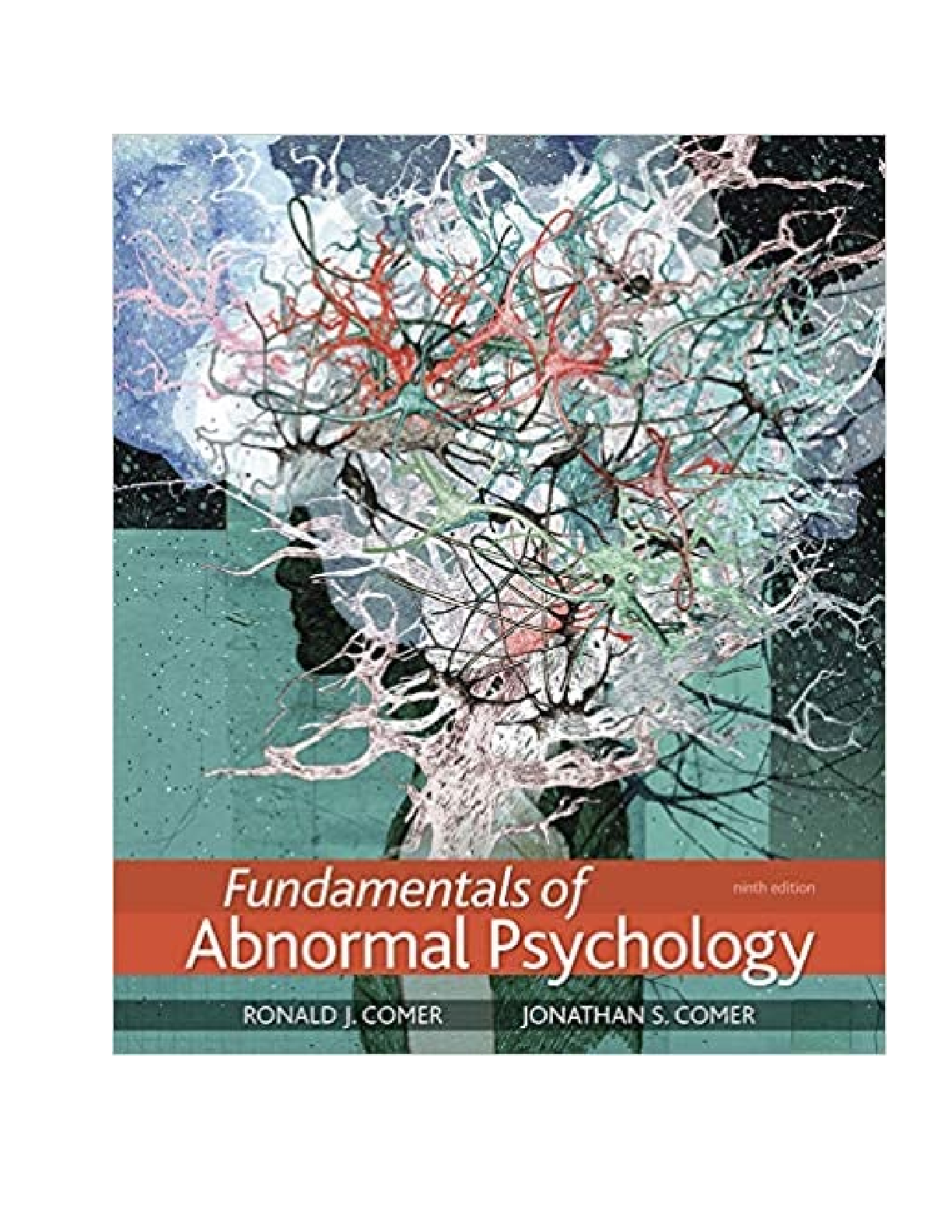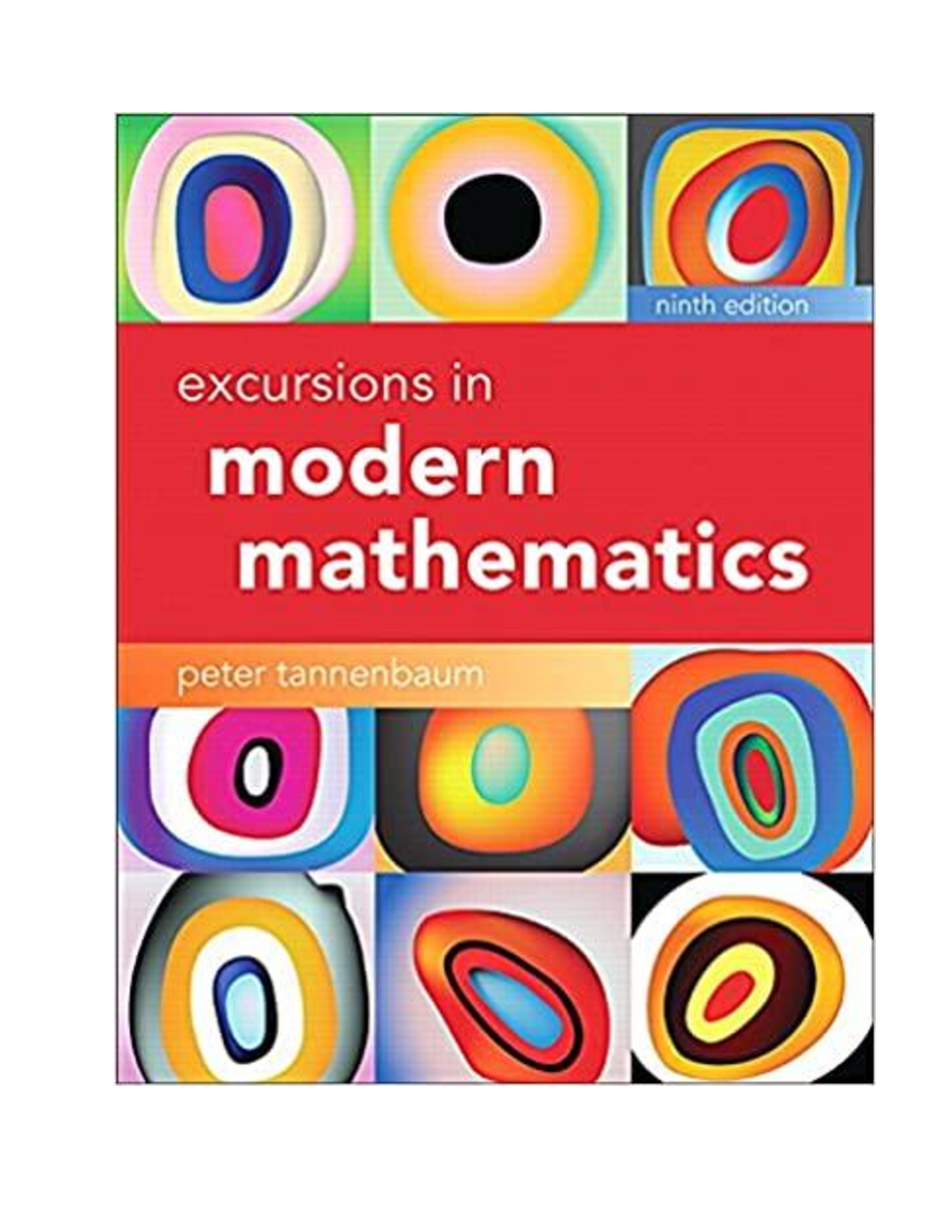Thermodynamics > eBook-PDF > [eBook] [PDF] for Munson, Young and Okiishi’s Fundamentals of Fluid Mechanics, 9th Edition By Phil (All)
[eBook] [PDF] for Munson, Young and Okiishi’s Fundamentals of Fluid Mechanics, 9th Edition By Philip Gerhart, Andrew Gerhart, John Hochstein
Document Content and Description Below
TABLE OF CONTENTS 1 Introduction 1 Learning Objectives 1 1.1 Some Characteristics of Fluids 3 1.2 Dimensions, Dimensional Homogeneity, and Units 4 1.2.1 Systems of Units 7 1.3 Analysis... of Fluid Behavior 12 1.4 Measures of Fluid Mass and Weight 12 1.4.1 Density 12 1.4.2 Specific Weight 14 1.4.3 Specific Gravity 14 1.5 Ideal Gas Law 14 1.6 Viscosity 17 1.7 Compressibility of Fluids 23 1.7.1 Bulk Modulus 23 1.7.2 Compression and Expansion of Gases 24 1.7.3 Speed of Sound 25 1.8 Vapor Pressure 26 1.9 Surface Tension 27 1.10 A Brief Look Back in History 30 Chapter Summary and Study Guide 32 References 34 2 Fluid Statics 35 Learning Objectives 35 2.1 Pressure at a Point 35 2.2 Basic Equation for Pressure Field 36 2.3 Pressure Variation in a Fluid at Rest 38 2.3.1 Incompressible Fluid 39 2.3.2 Compressible Fluid 42 2.4 Standard Atmosphere 43 2.5 Measurement of Pressure 45 2.6 Manometry 47 2.6.1 Piezometer Tube 47 2.6.2 U-Tube Manometer 48 2.6.3 Inclined-Tube Manometer 50 2.7 Mechanical and Electronic Pressure-Measuring Devices 51 2.8 Hydrostatic Force on a Plane Surface 54 2.9 Pressure Prism 60 2.10 Hydrostatic Force on a Curved Surface 63 2.11 Buoyancy, Flotation, and Stability 65 2.11.1 Archimedes’ Principle 65 2.11.2 Stability 68 2.12 Pressure Variation in a Fluid with Rigid-Body Motion 70 2.12.1 Linear Motion 70 2.12.2 Rigid-Body Rotation 72 Chapter Summary and Study Guide 74 References 75 3 Elementary Fluid Dynamics—The Bernoulli Equation 76 Learning Objectives 76 3.1 Newton’s Second Law 76 3.2 F = ma along a Streamline 79 3.3 F = ma Normal to a Streamline 83 3.4 Physical Interpretations and Alternate Forms of the Bernoulli Equation 85 3.5 Static, Stagnation, Dynamic, and Total Pressure 88 3.6 Examples of Use of the Bernoulli Equation 93 3.6.1 Free Jets 93 3.6.2 Confined Flows 96 3.6.3 Flowrate Measurement 102 3.7 The Energy Line and the Hydraulic Grade Line 106 3.8 Restrictions on Use of the Bernoulli Equation 109 3.8.1 Compressibility Effects 109 3.8.2 Unsteady Effects 110 3.8.3 Rotational Effects 111 3.8.4 Other Restrictions 112 Chapter Summary and Study Guide 113 References 114 4 Fluid Kinematics 115 Learning Objectives 115 4.1 The Velocity Field 115 4.1.1 Eulerian and Lagrangian Flow Descriptions 118 4.1.2 One-, Two-, and Three-Dimensional Flows 119 4.1.3 Steady and Unsteady Flows 120 4.1.4 Streamlines, Streaklines, and Pathlines 120 4.2 The Acceleration Field 124 4.2.1 Acceleration and the Material Derivative 124 4.2.2 Unsteady Effects 127 4.2.3 Convective Effects 127 4.2.4 Streamline Coordinates 130 4.3 Control Volume and System Representations 132 4.4 The Reynolds Transport Theorem 134 4.4.1 Derivation of the Reynolds Transport Theorem 136 4.4.2 Physical Interpretation 141 4.4.3 Relationship to Material Derivative 141 4.4.4 Steady Effects 142 4.4.5 Unsteady Effects 142 4.4.6 Moving Control Volumes 143 4.4.7 Selection of a Control Volume 145 Chapter Summary and Study Guide 145 References 146 5 Finite Control Volume Analysis 147 Learning Objectives 147 5.1 Conservation of Mass—The Continuity Equation 148 5.1.1 Derivation of the Continuity Equation 148 5.1.2 Fixed, Nondeforming Control Volume 150 5.1.3 Moving, Nondeforming Control Volume 156 5.1.4 Deforming Control Volume 158 5.2 Newton’s Second Law—The Linear Momentum and Moment-of-Momentum Equations 160 5.2.1 Derivation of the Linear Momentum Equation 160 5.2.2 Application of the Linear Momentum Equation 161 5.2.3 Derivation of the Moment-of-Momentum Equation 174 5.2.4 Application of the Moment-of-Momentum Equation 176 5.3 First Law of Thermodynamics—The Energy Equation 182 5.3.1 Derivation of the Energy Equation 182 5.3.2 Application of the Energy Equation 185 5.3.3 The Mechanical Energy Equation and the Bernoulli Equation 189 5.3.4 Application of the Energy Equation to Nonuniform Flows 195 5.3.5 Comparison of Various Forms of the Energy Equation 197 5.3.6 Combination of the Energy Equation and the Moment-of-Momentum Equation 199 5.4 Second Law of Thermodynamics—Irreversible Flow 200 5.4.1 Semi-infinitesimal Control Volume Statement of the Energy Equation 200 5.4.2 Semi-infinitesimal Control Volume Statement of the Second Law of Thermodynamics 201 5.4.3 Combination of the Equations of the First and Second Laws of Thermodynamics 202 Chapter Summary and Study Guide 203 References 204 6 Differential Analysis of Fluid Flow 205 Learning Objectives 205 6.1 Fluid Element Kinematics 206 6.1.1 Velocity and Acceleration Fields Revisited 206 6.1.2 Linear Motion and Deformation 207 6.1.3 Angular Motion and Deformation 208 6.2 Conservation of Mass 211 6.2.1 Differential Form of Continuity Equation 211 6.2.2 Cylindrical Polar Coordinates 214 6.2.3 The Stream Function 214 6.3 The Linear Momentum Equation 217 6.3.1 Description of Forces Acting on the Differential Element 218 6.3.2 Equations of Motion 220 6.4 Inviscid Flow 221 6.4.1 Euler’s Equations of Motion 221 6.4.2 The Bernoulli Equation 222 6.4.3 Irrotational Flow 223 6.4.4 The Bernoulli Equation for Irrotational Flow 225 6.4.5 The Velocity Potential 226 6.5 Some Basic, Plane Potential Flows 228 6.5.1 Uniform Flow 230 6.5.2 Source and Sink 230 6.5.3 Vortex 232 6.5.4 Doublet 235 6.6 Superposition of Basic, Plane Potential Flows 237 6.6.1 Source in a Uniform Stream—Half-Body 237 6.6.2 Rankine Ovals 240 6.6.3 Flow Around a Circular Cylinder 242 6.7 Other Aspects of Potential Flow Analysis 248 6.8 Viscous Flow 248 6.8.1 Stress–Deformation Relationships 249 6.8.2 The Navier–Stokes Equations 249 6.9 Some Simple Solutions for Laminar, Viscous, Incompressible Flows 251 6.9.1 Steady, Laminar Flow Between Fixed Parallel Plates 251 6.9.2 Couette Flow 253 6.9.3 Steady, Laminar Flow in Circular Tubes 255 6.9.4 Steady, Axial, Laminar Flow in an Annulus 258 6.10 Other Aspects of Differential Analysis 260 6.10.1 Numerical Methods 260 Chapter Summary and Study Guide 261 References 262 7 Dimensional Analysis, Similitude, and Modeling 263 Learning Objectives 263 7.1 The Need for Dimensional Analysis 264 7.2 Buckingham Pi Theorem 266 7.3 Determination of Pi Terms 267 7.4 Some Additional Comments about Dimensional Analysis 273 7.4.1 Selection of Variables 273 7.4.2 Determination of Reference Dimensions 274 7.4.3 Uniqueness of Pi Terms 276 7.5 Determination of Pi Terms by Inspection 276 7.6 Common Dimensionless Groups in Fluid Mechanics 278 7.7 Correlation of Experimental Data 283 7.7.1 Problems with One Pi Term 283 7.7.2 Problems with Two or More Pi Terms 284 7.8 Modeling and Similitude 286 7.8.1 Theory of Models 287 7.8.2 Model Scales 290 7.8.3 Practical Aspects of Using Models 291 7.9 Some Typical Model Studies 293 7.9.1 Flow Through Closed Conduits 293 7.9.2 Flow Around Immersed Bodies 295 7.9.3 Flow with a Free Surface 299 7.10 Similitude Based on Governing Differential Equations 302 Chapter Summary and Study Guide 305 References 306 8 Viscous Flow in Pipes 307 Learning Objectives 307 8.1 General Characteristics of Pipe Flow 308 8.1.1 Laminar or Turbulent Flow 309 8.1.2 Entrance Region and Fully Developed Flow 311 8.1.3 Pressure and Shear Stress 312 8.2 Fully Developed Laminar Flow 313 8.2.1 From F = ma Applied Directly to a Fluid Element 314 8.2.2 From the Navier–Stokes Equations 318 8.2.3 From Dimensional Analysis 319 8.2.4 Energy Considerations 320 8.3 Fully Developed Turbulent Flow 322 8.3.1 Transition from Laminar to Turbulent Flow 322 8.3.2 Turbulent Shear Stress 324 8.3.3 Turbulent Velocity Profile 329 8.3.4 Turbulence Modeling 332 8.3.5 Chaos and Turbulence 333 8.4 Pipe Flow Losses via Dimensional Analysis 333 8.4.1 Major Losses 333 8.4.2 Minor Losses 339 8.4.3 Noncircular Conduits 348 8.5 Pipe Flow Examples 351 8.5.1 Single Pipes 351 8.5.2 Multiple Pipe Systems 360 8.6 Pipe Flowrate Measurement 364 8.6.1 Pipe Flowrate Meters 364 8.6.2 Volume Flowmeters 369 Chapter Summary and Study Guide 370 References 372 9 Flow over Immersed Bodies 373 Learning Objectives 373 9.1 General External Flow Characteristics 374 9.1.1 Lift and Drag Concepts 375 9.1.2 Characteristics of Flow Past an Object 378 9.2 Boundary Layer Characteristics 382 9.2.1 Boundary Layer Structure and Thickness on a Flat Plate 382 9.2.2 Prandtl/Blasius Boundary Layer Solution 385 9.2.3 Momentum Integral Boundary Layer Equation for a Flat Plate 389 9.2.4 Transition from Laminar to Turbulent Flow 394 9.2.5 Turbulent Boundary Layer Flow 396 9.2.6 Effects of Pressure Gradient 399 9.2.7 Momentum Integral Boundary Layer Equation with Nonzero Pressure Gradient 404 9.3 Drag 405 9.3.1 Friction Drag 405 9.3.2 Pressure Drag 407 9.3.3 Drag Coefficient Data and Examples 409 9.4 Lift 422 9.4.1 Surface Pressure Distribution 424 9.4.2 Circulation 429 Chapter Summary and Study Guide 434 References 435 10 Open-Channel Flow 437 Learning Objectives 437 10.1 General Characteristics of Open-Channel Flow 437 10.2 Surface Waves 439 10.2.1 Wave Speed 439 10.2.2 Froude Number Effects 442 10.3 Energy Considerations 444 10.3.1 Energy Balance 444 10.3.2 Specific Energy 445 10.4 Uniform Flow 448 10.4.1 Uniform Flow Approximations 448 10.4.2 The Chezy and Manning Equations 449 10.4.3 Uniform Flow Examples 451 10.5 Gradually Varied Flow 457 10.6 Rapidly Varied Flow 458 10.6.1 The Hydraulic Jump 460 10.6.2 Sharp-Crested Weirs 464 10.6.3 Broad-Crested Weirs 467 10.6.4 Underflow (Sluice) Gates 470 Chapter Summary and Study Guide 471 References 472 11 Compressible Flow 473 Learning Objectives 473 11.1 Ideal Gas Thermodynamics 474 11.2 Stagnation Properties 479 11.3 Mach Number and Speed of Sound 480 11.4 Compressible Flow Regimes 485 11.5 Shock Waves 489 11.5.1 Normal Shock 489 11.6 Isentropic Flow 495 11.6.1 Steady Isentropic Flow of an Ideal Gas 495 11.6.2 Incompressible Flow and the Bernoulli Equation 498 11.6.3 The Critical State 500 11.7 One-Dimensional Flow in a Variable Area Duct 500 11.7.1 General Considerations 501 11.7.2 Isentropic Flow of an Ideal Gas with Area Change 504 11.7.3 Operation of a Converging Nozzle 510 11.7.4 Operation of a Converging–Diverging Nozzle 512 11.8 Constant-Area Duct Flow with Friction 516 11.8.1 Preliminary Consideration: Comparison with Incompressible Duct Flow 516 11.8.2 The Fanno Line 517 11.8.3 Adiabatic Frictional Flow (Fanno Flow) of an Ideal Gas 520 11.9 Frictionless Flow in a Constant-Area Duct with Heating or Cooling 528 11.9.1 The Rayleigh Line 528 11.9.2 Frictionless Flow of an Ideal Gas with Heating or Cooling (Rayleigh Flow) 531 11.9.3 Rayleigh Lines, Fanno Lines, and Normal Shocks 534 11.10 Analogy Between Compressible and Open-Channel Flows 535 11.11 Two-Dimensional Supersonic Flow 536 11.12 Effects of Compressibility in External Flow 538 Chapter Summary and Study Guide 541 References 544 12 Turbomachines 545 Learning Objectives 545 12.1 Introduction 546 12.2 Basic Energy Considerations 547 12.3 Angular Momentum Considerations 551 12.4 The Centrifugal Pump 553 12.4.1 Theoretical Considerations 554 12.4.2 Pump Performance Characteristics 558 12.4.3 Net Positive Suction Head (NPSH) 560 12.4.4 System Characteristics, Pump-System Matching, and Pump Selection 562 12.5 Dimensionless Parameters and Similarity Laws 566 12.5.1 Special Pump Scaling Laws 568 12.5.2 Specific Speed 569 12.5.3 Suction Specific Speed 570 12.6 Axial-Flow and Mixed-Flow Pumps 571 12.7 Fans 573 12.8 Turbines 574 12.8.1 Impulse Turbines 575 12.8.2 Reaction Turbines 582 12.9 Compressible Flow Turbomachines 585 12.9.1 Compressors 585 12.9.2 Compressible Flow Turbines 589 Chapter Summary and Study Guide 591 References 593 Appendix A Computational Fluid Dynamics 594 Appendix B Physical Properties of Fluids 613 Appendix C Properties of the U.S. Standard Atmosphere 618 Appendix D Compressible Flow Functions for an Ideal Gas with k = 1.4 620 Appendix E Comprehensive Table of Conversion Factors 628 Questions and Problems SP-1 Index I-1 [Show More]
Last updated: 1 year ago
Preview 1 out of 800 pages
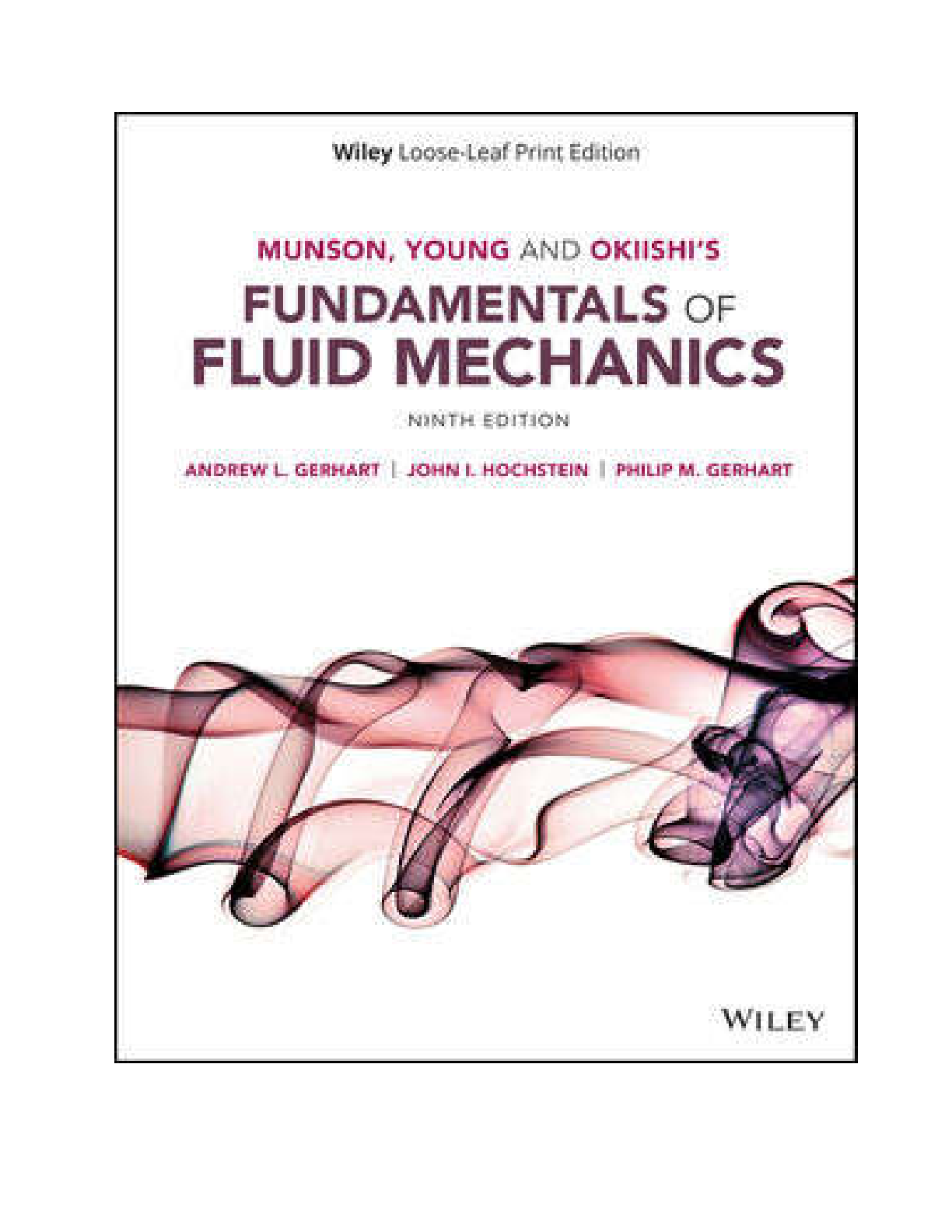
Buy this document to get the full access instantly
Instant Download Access after purchase
Add to cartInstant download
We Accept:

Reviews( 0 )
$20.00
Document information
Connected school, study & course
About the document
Uploaded On
Mar 14, 2022
Number of pages
800
Written in
Additional information
This document has been written for:
Uploaded
Mar 14, 2022
Downloads
0
Views
51



 Strategic Management Creating Competitive Advantages, 10e Gregory Dess, Gerry McNamara, Alan Eisner, Seung-Hyun Lee.png)
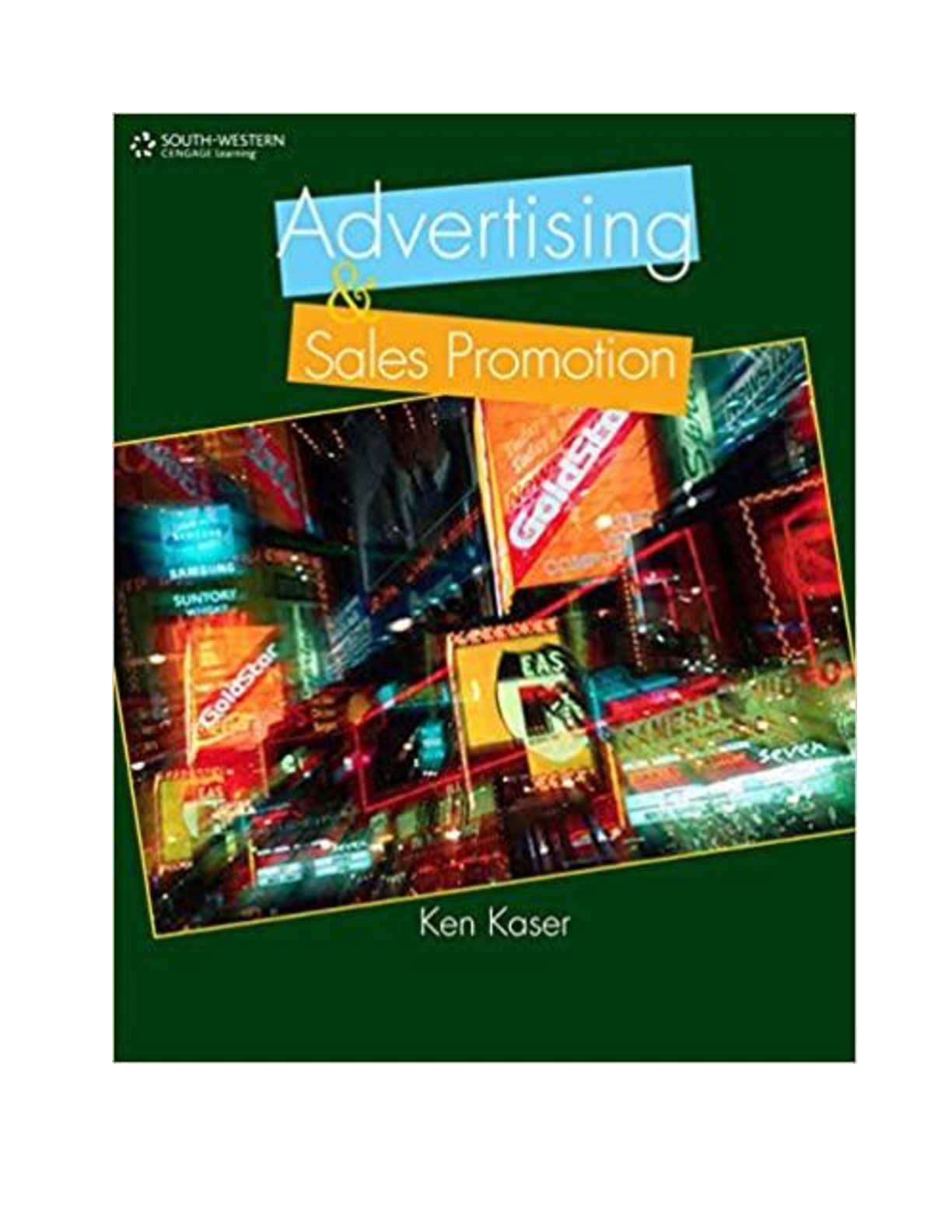


 Gary Donell, Clarence Byrd, Ida Chen.png)



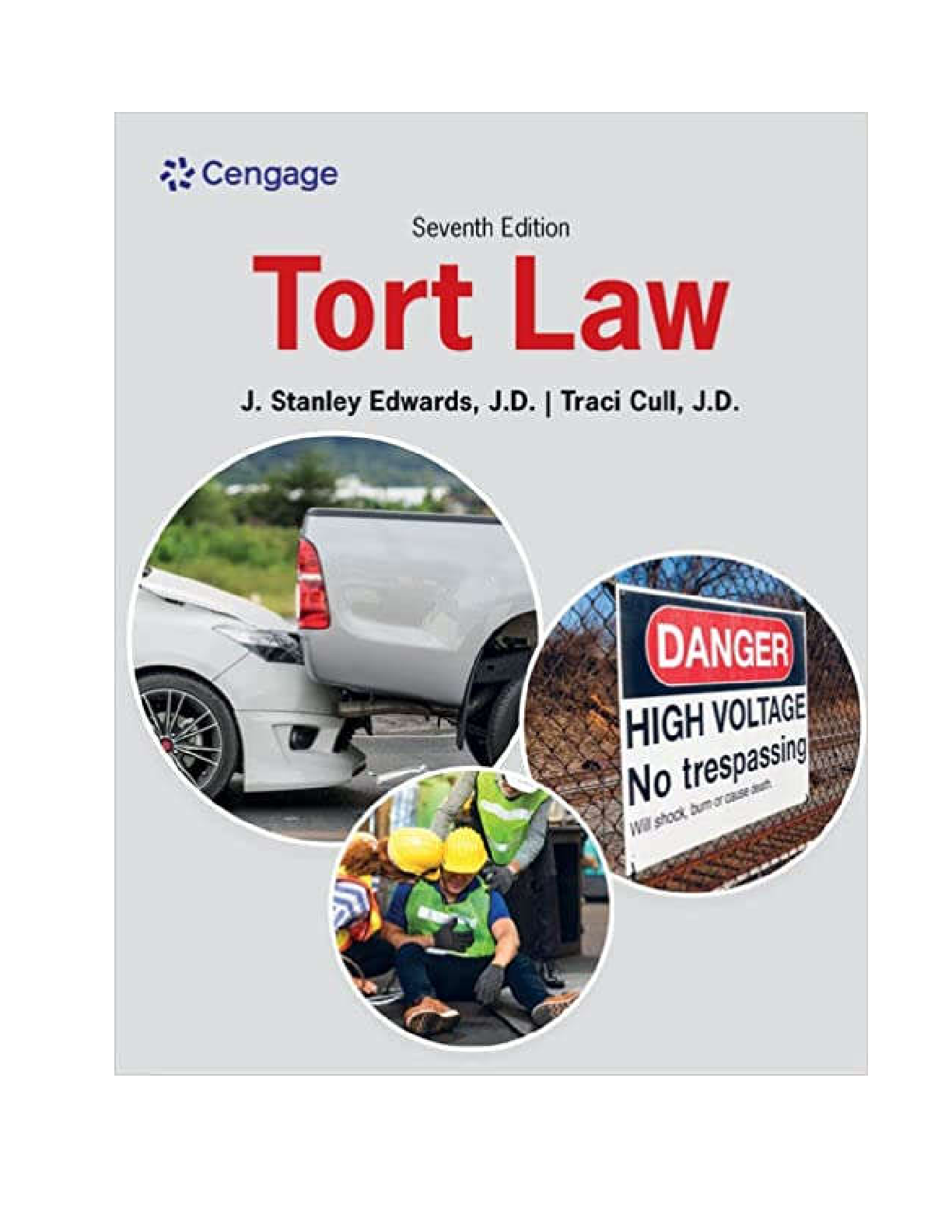
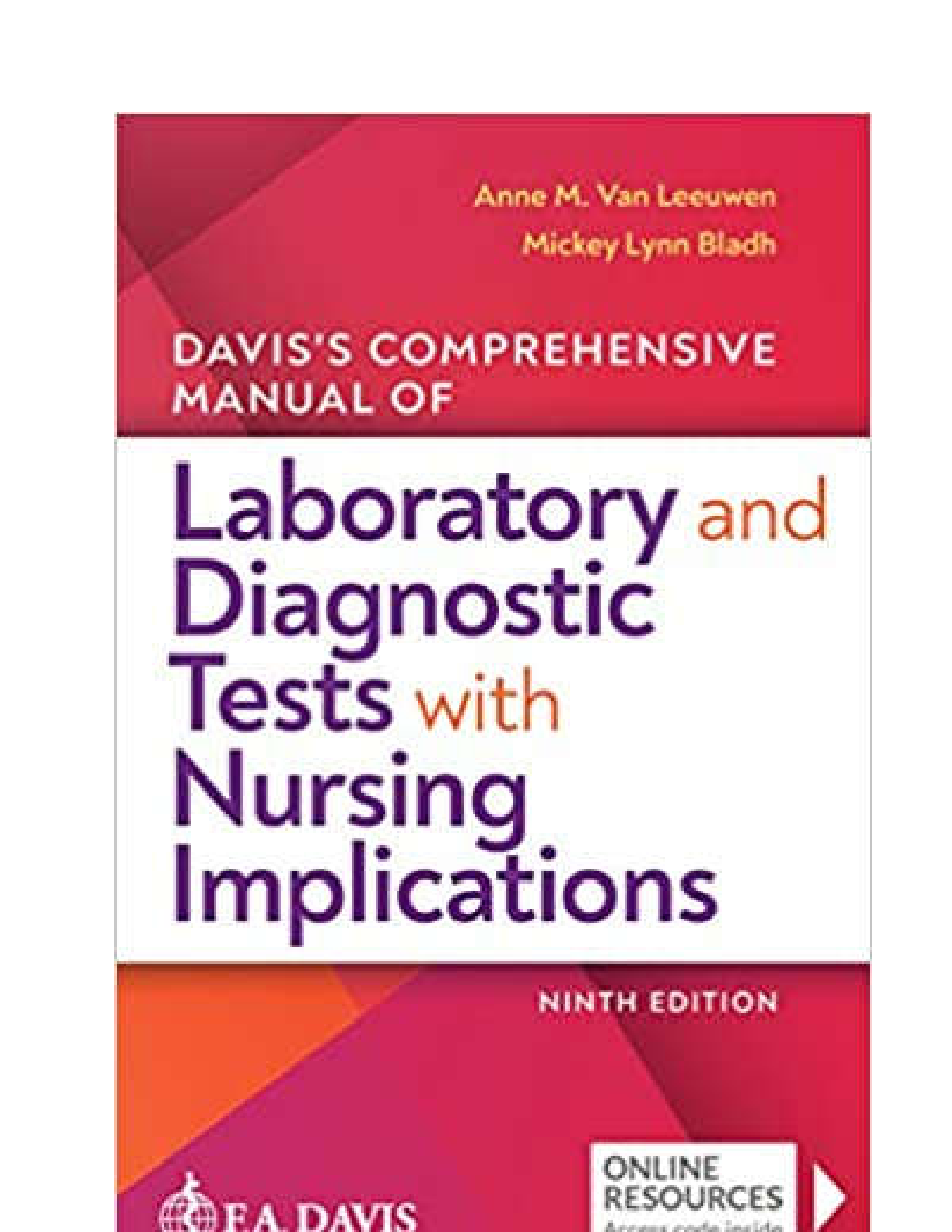



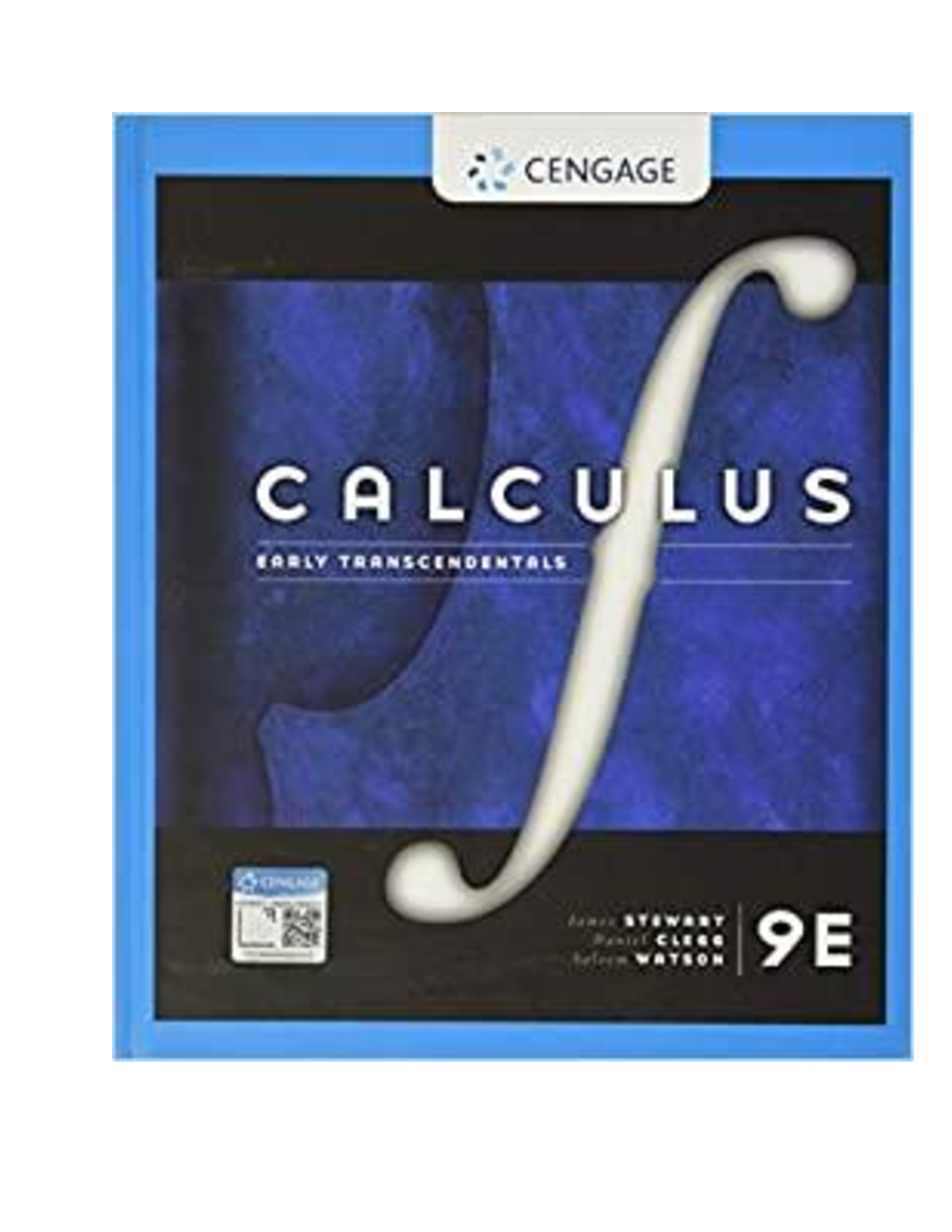

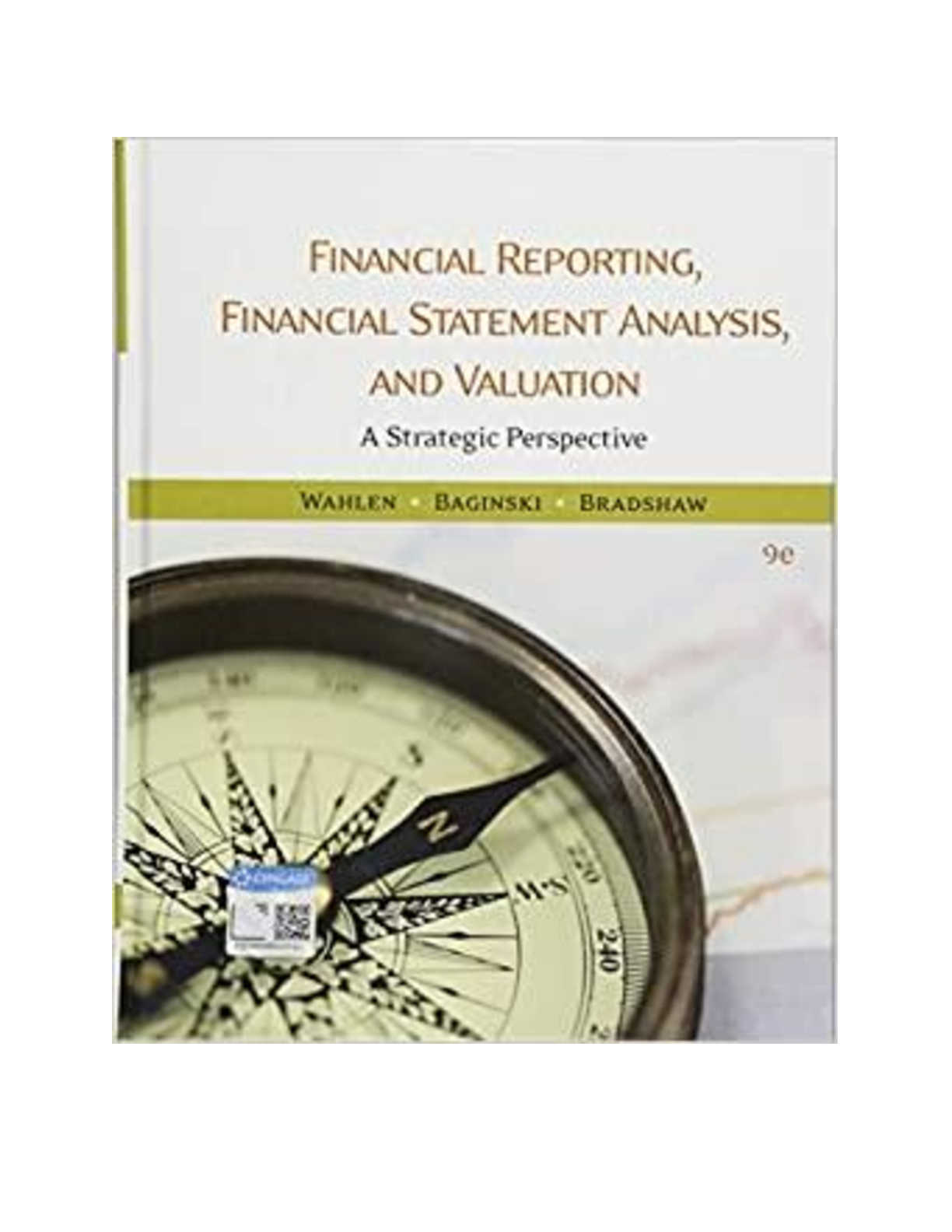
.png)

